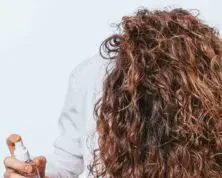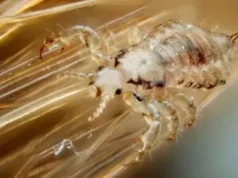Hello you are welcome to your favorite hair blog, I believe you landed on this page because you want to know How long to leave toner on brassy hair, well, you are on the right page because I would take more time to explain everything you should know about Hair toner.
Brassy hair is a common issue faced by individuals with colored or highlighted hair, particularly those with blonde, light brown, or gray tones. It occurs when the hair starts to develop unwanted warm, orange, or yellow undertones, making the color appear unnatural and less attractive.
To combat brassy hair and achieve a more desirable hair color, toning becomes essential. Toner is a hair product specifically formulated to neutralize and counteract unwanted brassy tones, restoring the hair to a cooler, more balanced hue. Understanding the science behind toning and its application is crucial to achieving the desired results safely and effectively.
The Science Behind Toning Brassy Hair
Toning works on the principle of color theory, where opposite colors on the color wheel cancel each other out. For example, purple is opposite yellow, and blue is opposite orange. Therefore, purple or blue toners are used to neutralize yellow or orange tones in the hair.
Toners are typically semi-permanent or demi-permanent hair colors that deposit pigments onto the hair cuticle, altering the underlying tone. They don’t lift or lighten the hair but rather work on the existing color to neutralize unwanted warmth.
Also Read: How To Remove Brassy Tones Brown Hair
How Long To Leave Toner On Brassy Hair
It can take as little as a minute to leave toner in your hair, but no longer than 45 minutes.
Since the length of the toning process varies from person to person, there is no precise timing. It will depend on the initial colour and condition of the hair.
Assessing Your Hair’s Brassy Tones
Before choosing a toner, it’s essential to identify the specific brassy tones present in your hair. Yellow tones often appear in lighter blonde shades, while orange and red undertones can be more common in darker blonde or light brown hair. Understanding the underlying tone will help determine the appropriate toner color for correction.
Types of Hair Toner

- Purple/Silver Toner: This type of toner is commonly used to neutralize yellow or brassy tones in blonde hair. It contains purple pigments that counteract the warm tones, leaving the hair with a cooler, ashy shade.
- Blue Toner: Blue toners work similarly to purple toners but are more effective in neutralizing orange or brassy tones in darker hair colors, such as light brown.
- Green Toner: Green toners are used to counteract red or orange undertones in dark hair colors.
- Clear Toner: Clear toners do not deposit any color pigments but are used to add shine and enhance the natural color of the hair.
Also Read: Can You Dye greasy hair? All You Should Know
How to Use Toner at Home
Step 1: Choose the Right Toner: Select a toner that suits your hair color and addresses the specific brassy or unwanted undertones you want to neutralize. You can find toners at beauty supply stores or online.
Step 2: Gather Supplies: You will need the toner product, developer (if required by the toner), mixing bowl, application brush, gloves, and an old shirt or towel to protect your clothes.
Step 3: Strand Test: Before applying the toner to your entire head, conduct a strand test. Mix a small amount of toner according to the manufacturer’s instructions and apply it to a small section of your hair. Check the processing time and the resulting color to ensure it achieves the desired effect.
Step 4: Prepare the Toner Mixture: If your toner requires a developer, mix the toner and developer in a 1:2 ratio (one part toner and two parts developer) in the mixing bowl. Stir well until the mixture is smooth and consistent.
Step 5: Apply the Toner: Wear gloves to protect your hands, and apply the toner mixture evenly to damp, towel-dried hair using the application brush. Start from the roots and work your way down to the ends, ensuring all hair is covered.
Step 6: Timing: The processing time will depend on the specific toner you’re using and the level of brassiness you want to correct. Refer to the instructions provided by the manufacturer and keep an eye on the time to avoid overtoning.
Step 7: Rinse and Condition: Once the processing time is complete, rinse your hair thoroughly with cool water until the water runs clear. Follow up with a color-safe, sulfate-free conditioner to nourish and hydrate the hair.
Step 8: Aftercare: To maintain the toned look and keep brassiness at bay, use color-safe hair care products and avoid excessive sun exposure and swimming in chlorinated water.
Note: If you’re unsure about toning your hair at home or dealing with significant brassiness, it’s best to seek advice from a professional hairstylist. They can guide you on the appropriate toner and application technique for your specific hair type and color.
Factors Influencing Toning Time
The effectiveness of toner application depends on various factors, such as hair porosity, thickness, and the intensity of brassiness. Additionally, the toner’s formulation and the developer used can influence processing time. Warmer tones may require longer processing, while cooler tones may need a shorter time.
Different Types of Toners and Their Application
There are various types of toners available, including liquid toners, toning shampoos, and color-depositing conditioners. Liquid toners are usually mixed with developers and applied like regular hair dye, while toning shampoos and conditioners can be used in your regular hair washing routine to maintain the toner’s effects.

Toner Overexposure: Potential Risks and Precautions
Leaving toner on for too long or using an overly pigmented toner can lead to overtoning, resulting in an unnatural and overly cool color. To avoid this, it’s crucial to follow the manufacturer’s instructions and perform strand tests. If overtoning does occur, using a clarifying shampoo can help fade the color.
Also Read: How To prepare Onion Juice For hair growth
Consulting with a Professional Stylist
While toning can be done at home, it’s advisable to consult with a professional hairstylist, especially if you’re unsure about the process or dealing with complex brassiness issues. A stylist can assess your hair’s condition, recommend the right toner, and perform the toning process accurately for optimal results.
Aftercare for Toned Brassy Hair
After toning, it’s essential to use color-safe, sulfate-free shampoos and conditioners to maintain the toner’s effects and prevent premature fading. Regular deep conditioning treatments can also help keep the hair healthy and vibrant.
Maintaining Your Toned Look: Tips and Products
To extend the life of your toned hair, avoid excessive exposure to the sun and chlorine, as these can cause color fading. Additionally, using color-depositing products, like color-refreshing conditioners, can help revitalize the tone between full toning sessions.
Conclusion: Achieving Beautiful, Brass-Free Hair Safely
Toning brassy hair is a science-backed process that requires careful consideration of hair color, toner type, and processing time. By understanding the principles behind toning and performing strand tests, individuals can achieve beautiful, brass-free hair safely at home or with the guidance of a professional stylist. With proper aftercare and maintenance, the toned look can be preserved, providing a gorgeous and natural-looking hair color that enhances your overall appearance.






